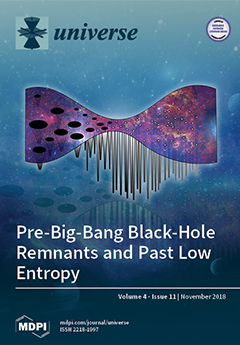Recently, Ciufolini and coworkers announced the forthcoming launch of a new cannonball geodetic satellite in 2019. It should be injected in an essentially circular path with the same semimajor axis
a of LAGEOS (Laser Geodynamics Satellite), in orbit since 1976, and an inclination
[...] Read more.
Recently, Ciufolini and coworkers announced the forthcoming launch of a new cannonball geodetic satellite in 2019. It should be injected in an essentially circular path with the same semimajor axis
a of LAGEOS (Laser Geodynamics Satellite), in orbit since 1976, and an inclination
I of its orbital plane supplementary with respect to that of its existing cousin. According to their proponents, the sum of the satellites’ precessions of the longitudes of the ascending nodes
should allow one to test the general relativistic Lense–Thirring effect to a ≃0.2% accuracy level, with a contribution of the mismodeling in the even zonal harmonics
of the geopotential to the total error budget as little as
. Actually, such an ambitious goal seems to be hardly attainable because of the direct and indirect impact of, at least, the first even zonal
. On the one hand, the lingering scatter of the estimated values of such a key geophysical parameter from different recent GRACE/GOCE-based (Gravity Recovery and Climate Experiment/Gravity field and steady-state Ocean Circulation Explorer) global gravity field solutions is representative of an uncertainty which may directly impact the summed Lense–Thirring node precessions at a ≃70–80% in the worst scenarios, and to a ≃3–10% level in other, more favorable cases. On the other hand, the phenomenologically measured secular decay
of the semimajor axis of LAGEOS (and, presumably, of the other satellite as well), currently known at a
0.03 m yr
level after more than 30 yr, will couple with the sum of the
-induced node precessions yielding an overall bias as large as ≃20–40% after 5–10 yr. A further systematic error of the order of ≃2–14% may arise from an analogous interplay of the secular decay of the inclination
with the oblateness-driven node precessions.
Full article





